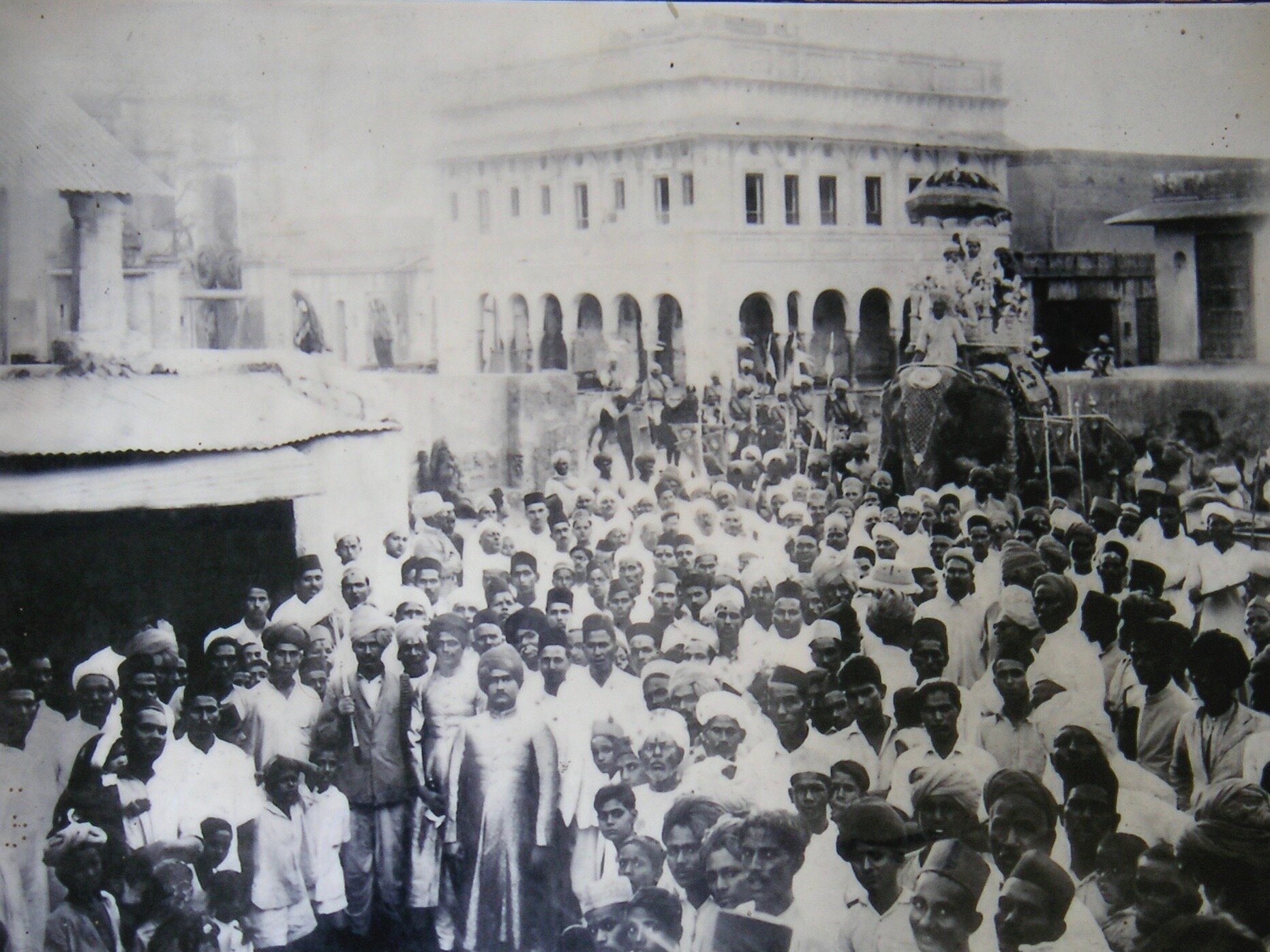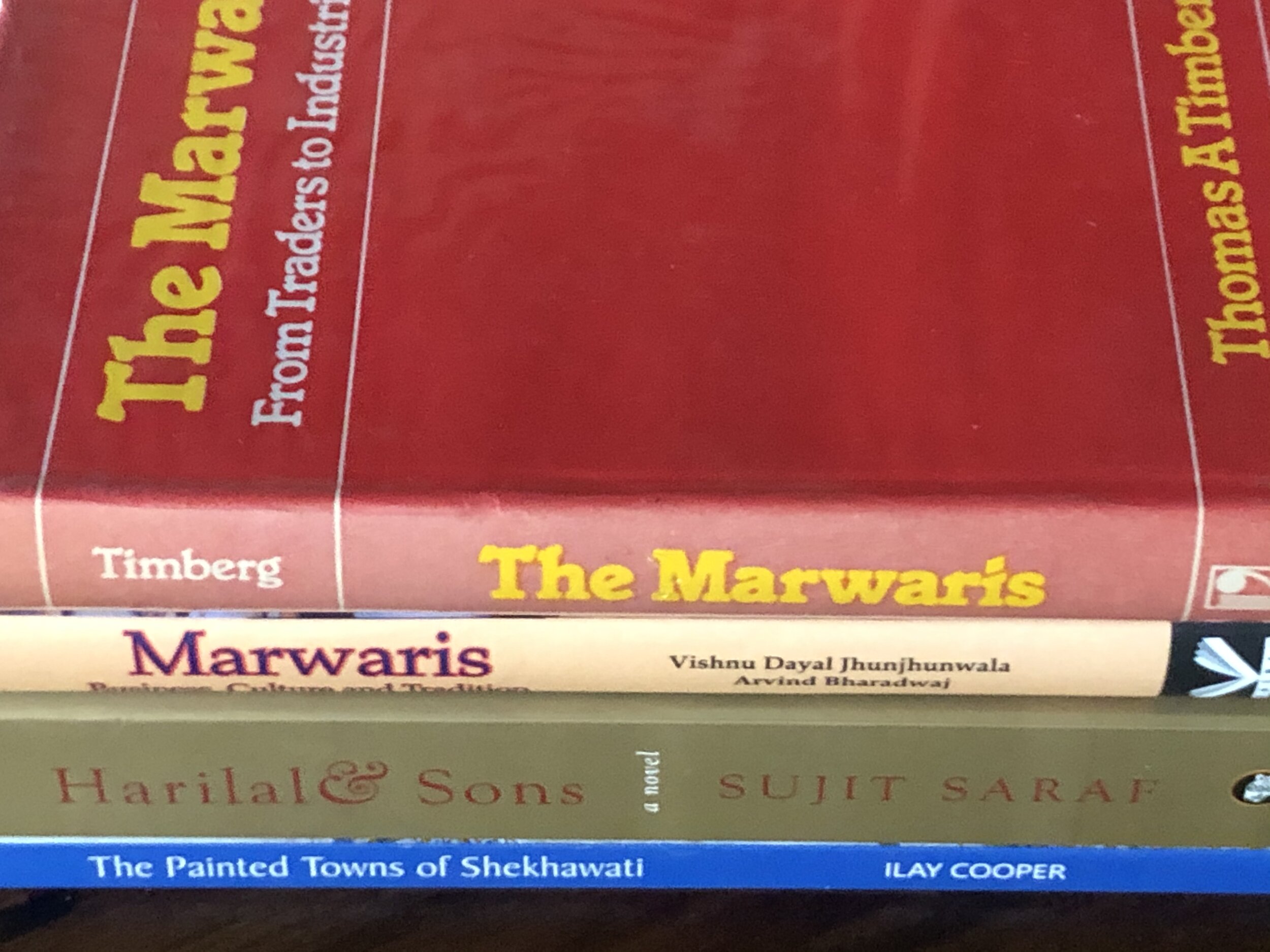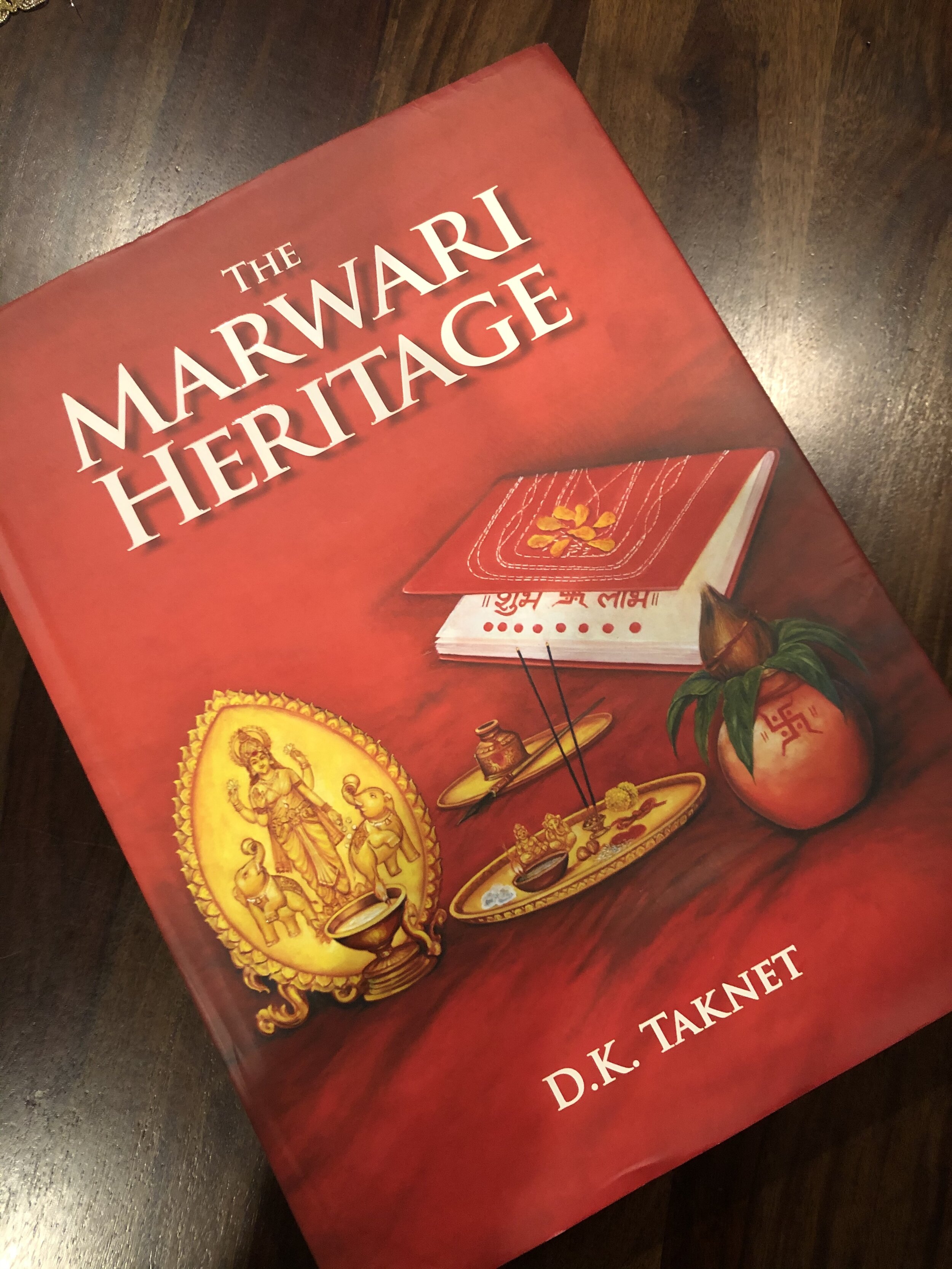Photo: Wedding of Draupadi Devi Tibrewal (daugther of Brahmadutt Tibrewal) with Ghisaram Choudhary in Mukundgarh. Ghisaram is sitting on the elephant. King Bagh Singh of Mukundgarh in front of the procession.
The Marwaris
The term “Marwaris” has come to represent the migrant trading communities of Agarwals, Jains, Oswals, Maheshwaris and Khandelwals from Shekhwat area in North East Rajasthan. In the 1800s, trade along the Shekhawati routes had declined and there weren’t any alternative means for sustenance given the barren lands. The Marwaris started emigrating to different parts of India to set up trading outposts including Kolkata, the most prosperous city then, and other cities like Kanpur, Mumbai, Ahmedabad, Nagpur, Delhi and Chennai. This migration was accelerated between 1860 and 1900 once the Delhi-Kolkata railway was established.
The migration and success of the Marwaris came about because of the changing nature of the Indian economy. The British leveraged the Marwaris, and Gujratis, to restructure the Indian industry to support the industrialization of Britain. Indian weavers were well known around the world for their textiles, but now the British wanted to source raw materials for their textile machines in Manchester and sell the finished clothes in India. They encouraged Marwaris to migrate and set up businesses all over India, promising to protect their property in Shekhawat.
The British picked the Marwaris because they were tough, austere and trained in speculation. The idea of taking risk and buying something at a fixed price today with an uncertain price tomorrow was not widely internalized. The Marwaris set up a trading network encompassing the country. If you were a young boy growing up in Shekhawat in the early 1900s, you would be sent to a “gola” of a “seth” from you village. You would stay at a “basa” for free and apprentice under the seth’s guidance. Once you were ready, you would set up their own “gola” with investments from other “seths” typically to source raw materials they were already buying.
By 1950 or so, the Marwaris were the most successful Indian community. In the article, “India - The New Crorepathis” published by Time Magazine on 1st March, 1963, the author estimated that “Marwaris control 60% of Calcutta's commerce and industry, 45% of Bombay's. They hold half of the capital in the private economy”. Many of the top businesses houses are Marwaris (please see below), but more importantly, Marwaris dominated small business. They spread to the most remote parts of India. There was a saying: “jahaan jaye rail gadi, wahan jaye marwari”.
Source: The Indian Express (I have circled Marwari business houses to the best of my knowledge)
It is astonishing how the Marwaris from a small area, only 50 miles in radius, were living in poverty, and in less than 100 years, they came to control more than half of India’s private economy. Marwaris attracted antipathy due to their parsimony and exploitation of the poor (many movies in the 60s and 70s depicted Marwaris as hoarding food grains during famine). Nevertheless, the contribution Marwaris made to the economy of India is unquestionable.
Many of the top business houses including Birla, Goenka, Mittal, Singhania, Modi, Bajaj, Ruia, Dhoot and Goyal maintain their ancestral homes, “havelis”, in Shekhwat. In the early 1900s, all of them commissioned artists to paint al frescoes. The painted “havelis” of Shekhawat are worth a sight.
References:





